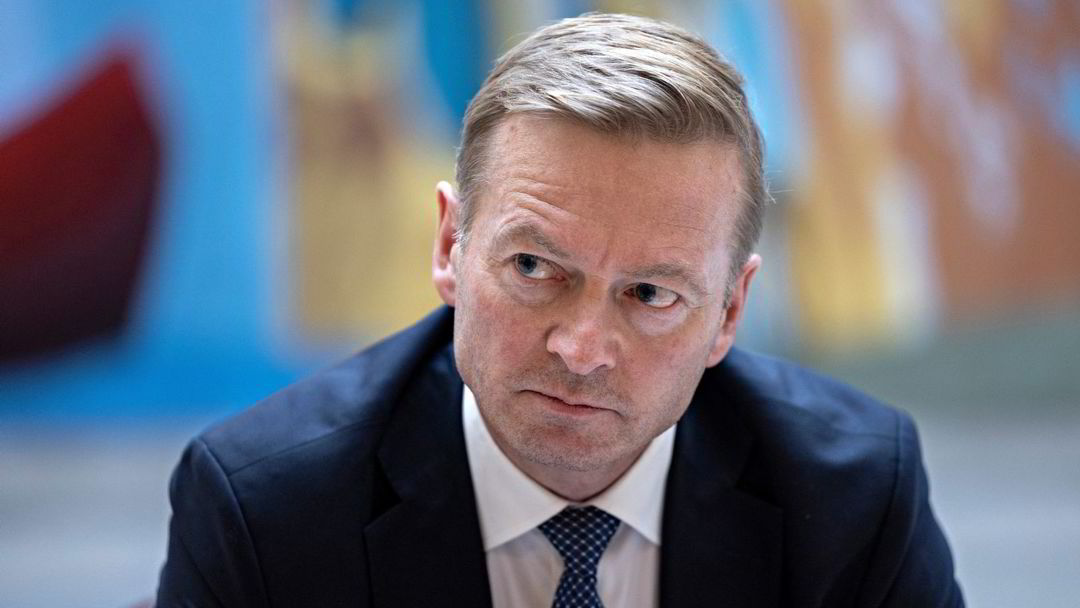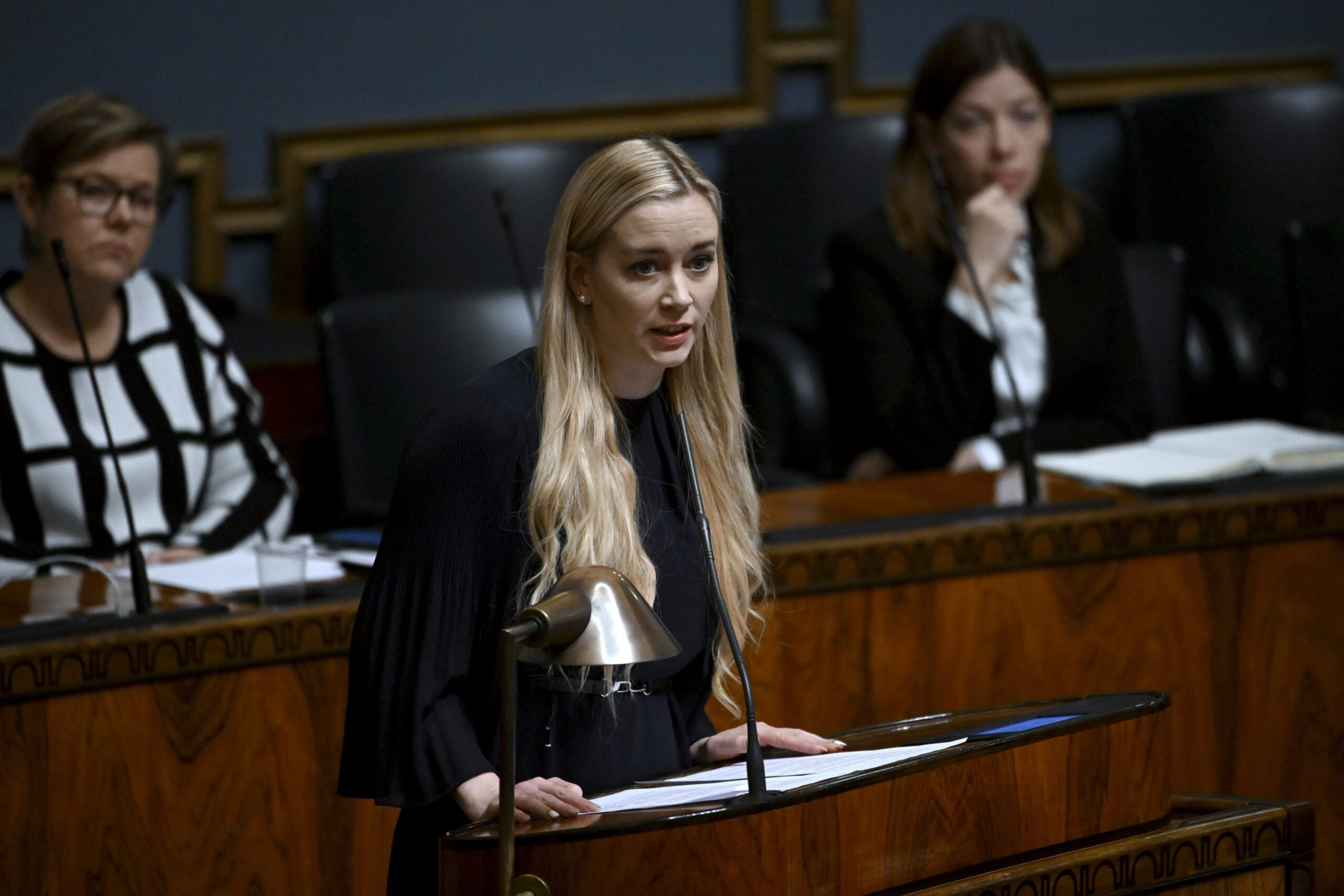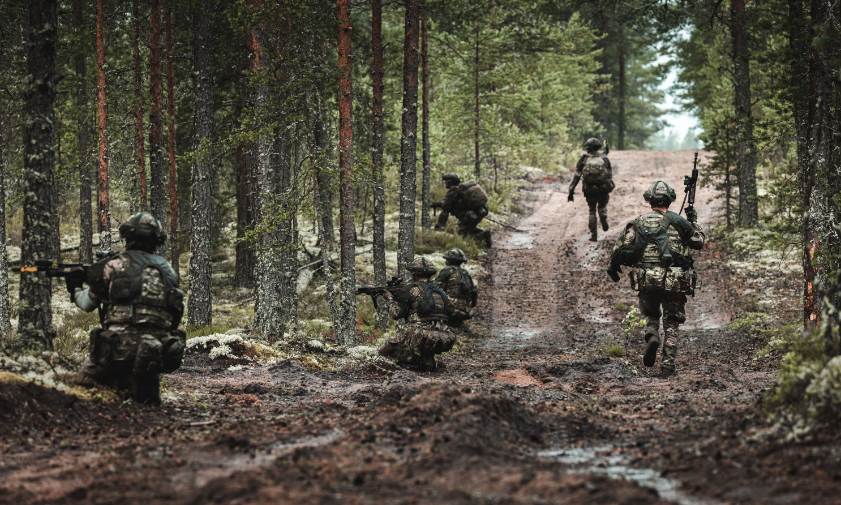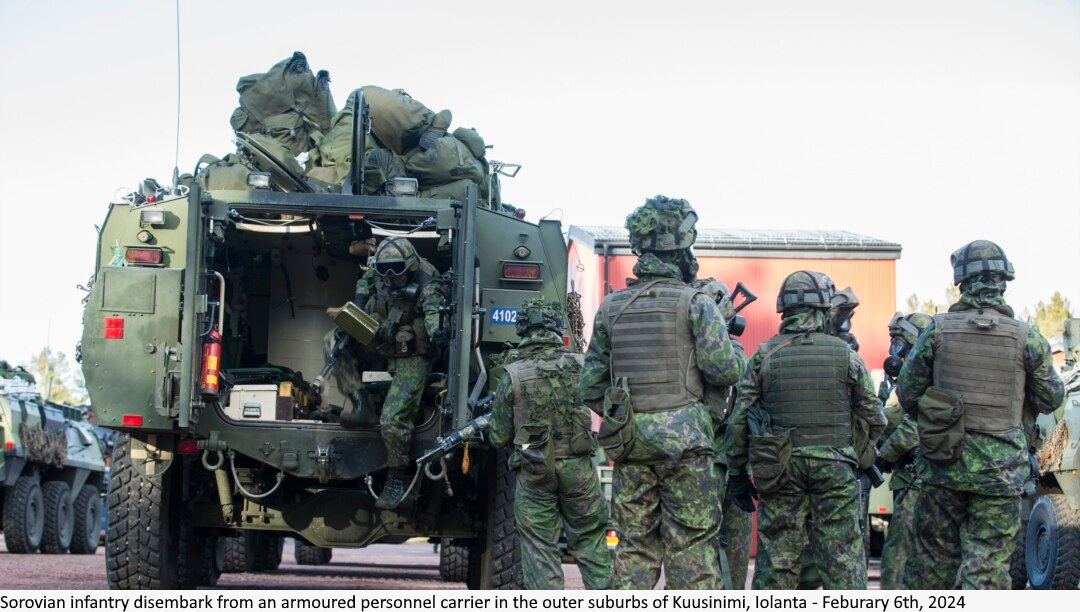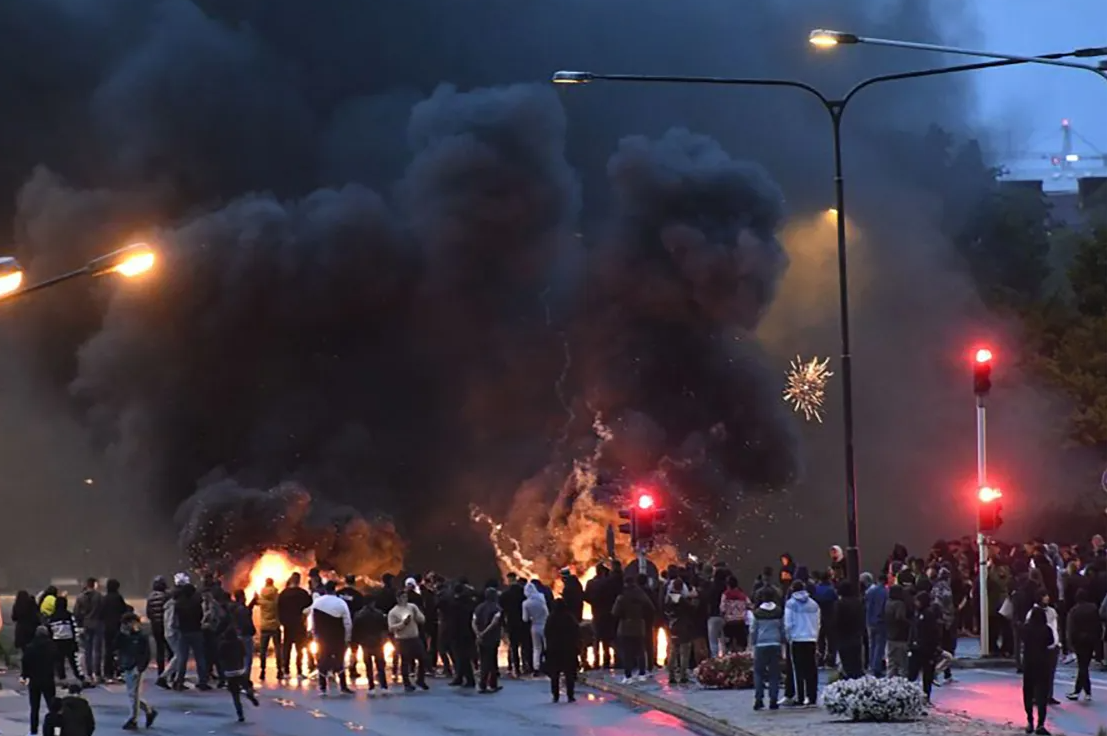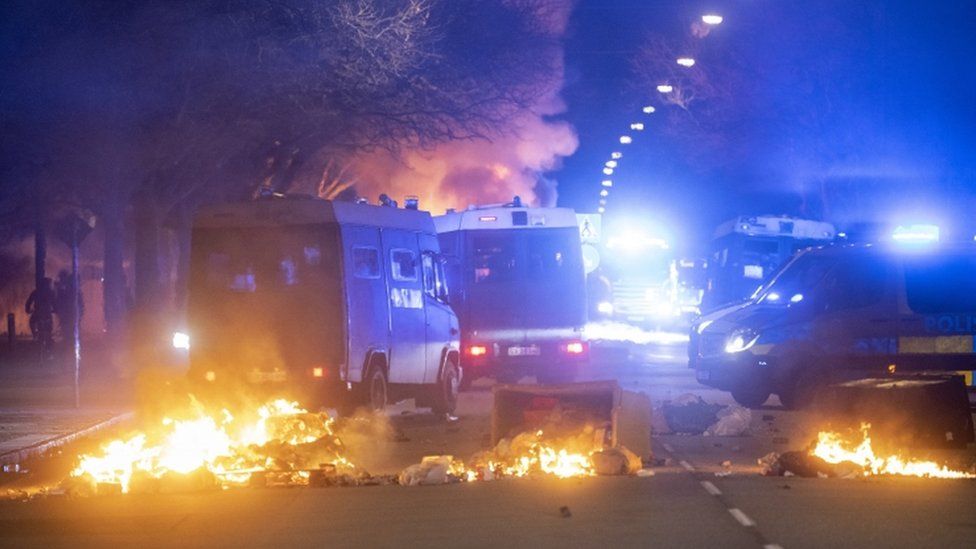Youth protests shake several cities over immigration and religious debate
Members of the organized youth movement 'PUFFOR' begins protests in 14 cities around the country in response to a recent refugee acceptance wave
Unrest continued throughout the country through the weekend and early into the weekday as protesters continue their march against recent government action to accept another wave of Iolanti refugees into the country. Up to a hundred mostly young people threw stones, set cars, tires, and rubbish bins on fire, and put up barriers to obstruct traffic throughout 14 cities around the country.
Scuffles and unrest were reported in Uhkala, where many refugees had set up home after being accepted into the country. Youth protesters quickly came to the streets on Friday evening, starting violent clashes between demonstrators and counter-protesters in Uhkala until local authorities could get the situation under control. Similar scenarios were also reported in Sarvlaks, Oswestry, and Vestersjø. Vestersjø police had to directly intervene in order to calm down the situation, despite this, police say that the situation still remains tense, adding that there were no reported injuries from the accident. Oswestry police fired rubber bullets and tear gas into crowds in the city-square after protesters had halted all traffic in the area after being pelted with stones.
Annukka Rovanperä, spokeswoman for the Sorovian National Police, said earlier in an interview that police would not attempt to revoke permission for the demonstrations around the country, claiming that due to Sorovia's respect for freedom of speech there is nothing that the country can do to stop groups of individuals from showing their stances on issues relating to immigration and religion.
In Korvola, hundreds of youth protesters met outside of Parliament and the streets of the city, demanding that the government listen to their pleas and take action against what they claimed as strong anti-Sorovian rhetoric from 'hostile refugee forces'. Riot police were called to the scene as threats of violence against refugees increased among the crowd, with 4 refugees being taken to local hospital after being stabbed in a Korvola metro station. Protesting would later take place in the central park of Lysekoster, where youth protesters would march from the park to the local municipality building, demanding action from local authorities.
Police have publicly stated that over 30 police officers and 19 members of the public had been injured in the violence directly correlating to the riots, with over 20 vehicles having been damaged or destroyed by protesters. In the Korvola suburb of Kvarnby, refugees were targeted by local protesters with fireworks and rocks, often chasing them while pelting them. Local authorities have said that several individuals had been hospitalized due to the incidents. Lysekoster police had to hose down protesters after a sharp uptick in violence between both protesters and counter-demonstrators, reporting that a handful of individuals had actually been stabbed to death by those affiliated with youth protesters around bus stops, metro stations, and streets. Further rioting began in Kausela, after an incident involving a refugee on a local streetcar would spark outrage among the youth movement, causing a sharp uptick in rioting starting on the Saturday.
According to police, these protesters also targeted local religious sites, businesses, and texts, with several cities including Lysekoster, Kausela, Lukana, and others reporting several petrol bombing attacks while in session. Protesters were also reported to have entered businesses owned by refugees who had been given entry by the state, only to wreck havoc and cause messes inside businesses by hand, launching fireworks, or tossing petrol bombs inside.
In recent statements given from the Prime Minister's office, Prime Minister Andersson urged youth protesters to come to their senses and stop the unrest and violence which was spreading throughout many of the country's cities. Andersson would condemn the acts of violence against refugees and migrants, where she reiterated that Sorovia does not condone the violence committed by the protesters.
Religious based violence sees major uptick due to riots
Amidst the rioting and protesting taking place within the country, violence towards Iolanti refugees and those of the Mehrabist faith saw major upticks according to police. Police reported that officers had to directly follow behind Iolanti refugees who were believed to be being stalked by individuals who it was believed would have posed a direct threat. Authorities and hospitals around the country reported an uptick in stabbing incidents, mainly targeted towards refugees, with many of which being seriously injured or dying of their injuries. However, there would also be those who would not be rescued by Sorovian authorities in time, with some being directly killed by aggressors linked to the riots. Meanwhile, youth rioters would toss petrol bombs out of car windows and towards refugee businesses and places of worship. According to videos and reports taken by both demonstrators and police, rioters would throw anything from rocks to firing flare guns and fireworks at refugees, causing police to be forced to take action to break up crowds of demonstrators.
'PUFFOR' Sorovia's new nativist youth movement
The Sorovian youth movement known as "PUFFOR" has claimed most responsibility for damages and actions done in the protests and riots, many rioters were seen wearing patches or waving flags of the movement during demonstrations. "PUFFOR", short for "Puffin Force", is a youth movement started on the internet by disgruntled youths as a way to as they claim, "take action and fight for Sorovia". The movement would quickly grow during the Iolanti border crisis, where the movement would push out heavy anti-Iolanti and anti-Mehrabist posts throughout social media like 4um and twitcher. As the numbers of refugees from the crisis grew, the group would become more and more infuriated with the actions of the government, deciding to organize demonstrations around the country which would see thousands of youths take to the streets.
The movement would release its own statement soon after the start of protesting on Friday, sending several demands to authorities:
1. The restoration of sensible governance to support all Sorovian citizens and the will of the people.
2. The removal of refugees unfit to be in Sorovia, and the total withdrawal of government funds to refugee support programs.
3. The enforcing of anti-Mehrabist and integration of nativist policy into the occupied territory of Iolanta.
Republic silent officially, party leaders slammed by Andersson for distasteful remarks
Republic party official Johan Sihvonen was recently condemned by PM Andersson after several distasteful remarks about Mehrabist religious freedom in Sorovia. Sihvonen, a senior party official, was quick to put the religion on blast in a press conference in the wake of recent rioting across the country, as his party avoided publicly stating anything relating to the matter, Sihvonen would claim that the youth on the streets throughout the country were merely trying to protect the future of Sorovia and the safety for all of its citizens. Sihvonen would even come to saying that the country should praise youth rioters for taking more action than many members of his own party, claiming that they hadn't gone far enough, and that the government should begin seizures of religious sites like mosques for demolition on the basis of anti-Sorovian behavior, meanwhile, praising those who had attacked religious sites during the riots with petrol bombs and other objects.
Prime Minister Andersson would come to publicly put Sihvonen and other high ranking members of his party on blast, despite Republic being a member of her coalition government. Andersson would say in a recent statement, "This gives a terrible image for what Sorovia stands for internationally, and is totally distasteful. Sorovia will protect the right to express one's freedom of religion as per the democratic systems which have been the backbone of our nation's democracy."
Parliament to move forward with ban on religious schools as a "top-priority"
The country's major parties have all released statements expressing support for the banning of religious schools within the country in the near future, similar to the bans on religious schools seen in Esthursia. Ministry of Education and Research, in a press conference told media that the goal was to prohibit the establishment of so-called independent religious schools, this comes as parties claim that the move to ban religious schools is an attempt to keep Sorovia united. However, many groups claim that the legislation which is going to be passed by parliament is specifically targeting Mehrabist schools, Labour Party MP Julie Solem would deny these claims, stating that her party was "against all private schools", arguing that the state should run all educational institutions. National Coalition Party MP Laila Hynninen would say that claims of targeting of religious minorities under the pretext of a religious school ban was completely outrageous, stating that all claims of so where only attempts at causing more religious tension between individuals around the country in light of recent rioting. Despite opposition by several aforementioned groups, parliament seems keen on moving forward with legislation banning religious schools within a rather quick timeframe.

